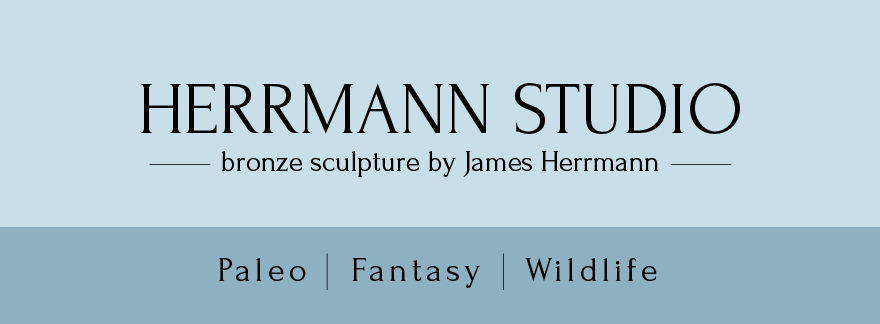Dunkleosteus
Medium – Cast bronze on a polished cream limestone base
Dimensions – 23.5"H X 25"W X 38"L
Price $11,000
During the Devonian Period from approximately 419 until 358 million years ago,(Ma ), much of eastern North America was covered by a warm tropical sea. Part of that sea was relatively deep and stagnant. While the upper reaches of this part of that ancient sea was in contact with the atmosphere and was oxygenated to a normal degree a lack of circulation never transported this essential gas to the seafloor. It remained oxygen poor or anoxic. Organic debris from the surface that rained down upon the seafloor decomposed very slowly, if at all.
Close to the surface in this tropical sea swam the apex predator of its day, Dunkleosteus. Dunkleosteus was member of an extinct group of fish called placoderms. Placoderms have boney plates that are part of their skeleton that cover their body. These plates acted as attachment sites for muscles just like our bones do but in addition their bones also acted like a protective suit of armor. Dunkleosteus was approximately the size of a living great white shark but had the entire front half of its body covered in these bony plates. The posterior or back half of this fish contained a cartilaginous skeleton similar to sharks and rays. One characteristic with sharks that Dunkleosteus did not share was their teeth, Dunkleosteus lacked teeth, instead the actual large jaw bones of its mandible protruded from the skin and sheared past the inside of the upper jaw or maxilla something like a massive paper cutter. These jaw bones sharpened with each bite and were powerful enough to scissor through the armor of any other placoderm living in these Devonian Seas. When Dunkleosteus died its remains would have sank to the anoxic bottom muds where many of these body plates were beautifully preserved as fossils
This sculpture captures a moment in time when Dunkleosteus was swimming in the more highly oxygenated water closer to shore as it passes slowly over a rocky reef.
All Rights Reserved | Herrmann Studio LLC | James Herrmann






